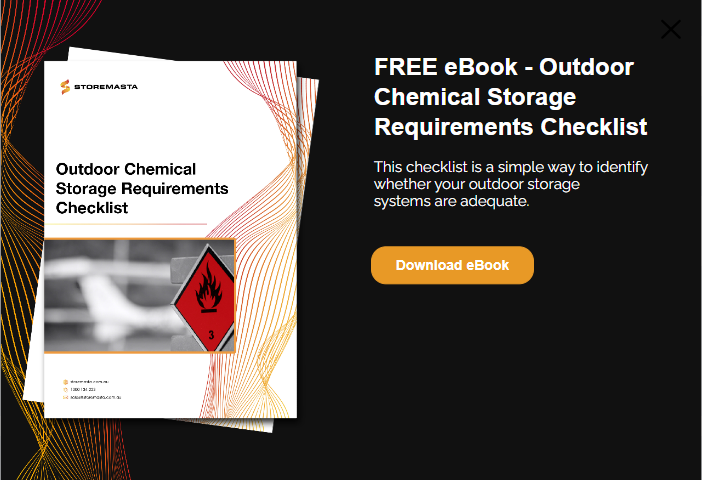Dangerous goods put people, the environment and property at risk if they are transported incorrectly - so transportation of hazardous chemicals is an important responsibility that requires plenty of planning and consideration.
Between the correct storage containers, managing temperatures, segregating chemicals, and managing licenses, there are plenty of challenges that come into play. If you're transporting dangerous goods, here are some crucial things to keep in mind.
First things first: know your dangerous goods
Before delving into transporting dangerous goods, it's important to understand exactly what is classed as a dangerous good in Australia. There are typically nine hazardous goods classes:
- Explosives, such as fireworks or ammunition.
- Gases, including flammable gases (such as LPG and aerosols), non-flammable gases (such as helium or nitrogen), and toxic gases (such as nitric acid or ammonia).
- Flammable liquids, such as petrol or acetone.
- Flammable solids and substances, including spontaneously combustible substances such as carbon or calcium dithionite, and goods that are dangerous when wet, like calcium carbide.
- Oxidising substances and organic peroxides, such as swimming pool chlorine or benzoyl peroxide.
- Toxic and infectious substances, such as cyanides or pesticides.
- Corrosive substances, such as hydrochloric acid.
- Others, including dry ice, and elevated temperature liquids like bitumen.
- Mixed class goods, which have more than one class.
Transportation requirements vary according to dangerous goods class. Read on for more information.
5 requirements for transporting dangerous goods
1. Segregate the goods correctly.
It's important to prevent incompatible classes of dangerous goods from making contact with each other, as they can have highly dangerous reactions, such as an explosion or the release of toxic vapours. Many classes of goods need to be stored in separate containers, and there are some chemicals or hazardous materials that need to be transported in completely separate vehicles. Transport Segregation Devices are useful for separating dangerous goods in transit.
More information can be found in our Dangerous Goods Segregation Guide, which contains a simple dangerous goods segregation chart. We recommend printing this, so segregation is top of mind for your entire dangerous goods team.
2. Be aware of storage temperatures.
Some goods, such as peroxides, need to be kept below a certain temperature to prevent any reactions from occurring.Always be aware of what temperatures your materials need to be stored at, and control the conditions of your transportation accordingly. Find out more about temperature control in Safe Work Australia’s Safety Data Sheets for hazardous goods.
3. Know your flash points.
Similarly, it’s critical to store flammable goods below their flash points - to prevent explosions and fires. A flash point is the lowest temperature at which the vapours of a flammable liquid will ignite.Different liquids have different flash points, with some flash points below 0 degrees celsius. Make sure every member of your team is aware of the flash points of your dangerous goods before transporting them.
4. Have the correct transport documentation.
When it comes to the transportation of dangerous goods, regulators can ask for documentation at any time. It's critical to have transport documents on hand, providing all required information on the goods being carried in the vehicle.Transport documents must have the name and phone number of the consignor, as well as a description of the dangerous goods which needs to meet specific guidelines. These vary by state, so contact your local competent authority for the most up-to-date information.
Also, some states also have no-go transport zones, where dangerous goods cannot be transported, so keep this in mind when planning your transportation routes.
5. Label goods correctly.
In most Australian states it's mandatory to label all hazardous chemicals in line with the Globally Harmonised System (GHS) requirements outlined by the UN. These include primary and secondary containers used in transportation, so it's important all your storage units meet the GHS label requirements.
6. Offload carefully.
Closely follow safety protocols when offloading your dangerous goods. Make sure to clear any obstacles and minimise traffic (both vehicle and human) in the area. If you're carrying dangerous goods up or down stairs, check that adequate stair safety products such as concrete stair treads are installed.
Next steps
Once your dangerous goods arrive at their location, storing them is a whole new ball game. We’ve developed an Outdoor Dangerous Goods Storage Checklist to help you navigate complex chemical storage requirements. Click on the image below to get your free copy.
Joining the team as a Dangerous Goods Storage Consultant, Melissa Hampton became Storemasta's Marketing Manager in late 2021. With extensive knowledge and experience in chemical compliance, Melissa is responsible for leading the Marketing team and helping shape their marketing strategy. In her spare time, you can find Melissa hiking, swimming and enjoying the great outdoors in beautiful north-west Tasmania.
